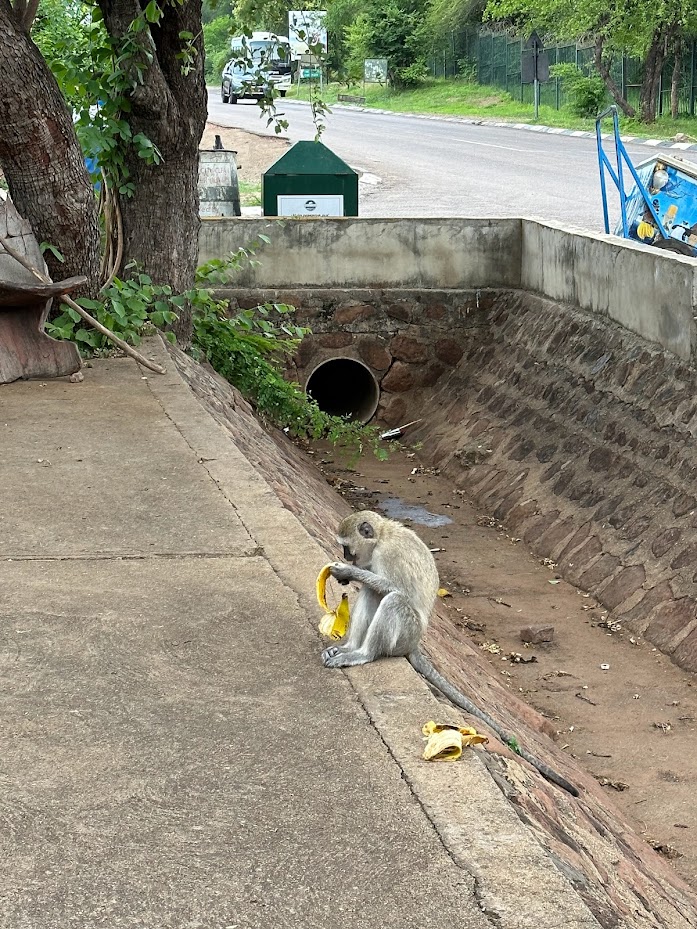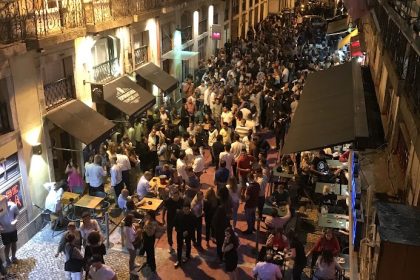Victoria Falls, located within the Victoria Falls National Park (Zimbabwe) and Mosi-Oa-Tunya National Park (Zambia), is the largest waterfall in the world. It is one of the Seven Natural Wonders of the World, as well as a UNESCO World Heritage Site. I have visited several waterfalls in my years of travels; however, Victoria Falls stands apart in more ways than just being the most spectacular. From the logistics of visiting the falls to the intricacies of the local customs, there are so many things I wish I knew before embarking on my trip! Keep reading for the little-known Victoria Falls travel tips that will ensure you make the most of both the Zimbabwean city and the falls themselves.
This free page might contain affiliate links. I’ll receive a small commission when you purchase from my links, at absolutely no cost to you. I appreciate your continued support!
Victoria Falls Quick Facts
- As of the Summer of 2023, the standard entrance fee for adult international visitors is $50 USD. Children between the ages of 6 and 12 are half-price, and those under the age of 6 are free.
- Operating hours are from 6 AM to 6 PM in the summer (September 1st through April 30th) and 6:30 AM to 6 PM in the winter (May 1st through August 31st)
- The best time to visit is between February and May (after the summer rains)
- The hottest month is October (27°C/81°F) and the coldest is June (17°C/63°F)
Victoria Falls Travel Tips
You Will Get Wet at the Falls
One thing that surprised me was how soaked I got while visiting the Victoria Falls waterfall. The falls are so strong that the misting can feel like intense, heavy rains from the trails, especially during the wet season. My perfectly straightened hair was a frizzy mess by the end of the morning. I highly recommend bringing a light rain jacket or poncho. I wish I had known this beforehand!
Even if you visit Victoria Falls during the dry season, expect lots and lots of rain near the falls. Keep reading to learn more about the wet and dry seasons!

Be Mindful of When You Travel: Wet VS. Dry Seasons
While Victoria Falls is considered an “all-year-round” destination, travelers who visit during the dry season may be disappointed. That’s right: the water levels of the falls vary depending on the time of year. Victoria Falls looks most spectacular in March/April when the water levels are the highest. The November/December period is considered the peak of the dry season, during which water levels are the lowest. It is still rather impressive from the Zimbabwean side at this time, but the Zambian side tends to fall short.
I was not aware of any of this prior to my trip, so I visited in early December. As you can see, even during the dry season, Victoria Falls is an incredible wonder of nature.

Visiting the Falls is (Usually) a Quick Activity
While your trip may be centered around visiting the Victoria Falls waterfall itself, it is usually a rather quick activity. On the Zimbabwean side, the easy “hike” from the first to the final (15th) viewing point takes about an hour or so, if you take your time, but it is obviously much quicker on the way back. I recommend arriving early in the morning to avoid crowds. If you do so, you will have almost an entire day’s worth of time left to explore the city of Victoria Falls.
If you’d like to extend your day at the Victoria Falls waterfall, consider white water rafting or crossing the bridge to Zambia. Those who would like to visit the Zambian side should allow about 20-30 minutes to cross the border. From there, you can visit the remaining 4 viewing points of the falls. Daredevils may also wish to swim in Devil’s Pool: a natural pool at the cliff’s edge.
Clearly, you can make a day out of a visit to the waterfall alone. However, many travelers choose to observe the falls from Zimbabwe, where the views are most spectacular, before continuing on with other activities; safari tours (Chobe National Park), village visits, helicopter rides, river cruises, and shopping are nearby. This is what I did, and, because of it, I feel I had a lot of time to fall in love with the city and people of Victoria Falls.


Prepare Beforehand If You Want to Cross the Zambian Border
In order to cross the bridge from Victoria Falls, Zimbabwe, to Livingstone, Zambia, (and vice versa) and reenter your point of origin later, you will need a passport and multiple/double-entry visa, depending on your nationality. The KAZA UniVisa is often recommended, as it allows travelers to cross between Zimbabwe and Zambia as frequently as they’d like within a 30-day period; however, not all travelers are eligible.
The process of obtaining such a visa is continuously evolving, so do your research to determine where and how to purchase one before arrival. I do not want to give you any outdated information!

Watch Out for Wildlife
In Zimbabwe, the city of Victoria Falls and the waterfall itself are located within the Victoria Falls National Park. Wild animals, such as elephants, lions, and Cape buffalo, roam the area freely. It is generally considered safe to walk around the area during the day, but, at night, some dangerous encounters may occur. Fortunately, I did not see anything larger than a warthog or monkey, but my tour guide said he has run into lions while walking down the main road. When visiting Victoria Falls, it is essential to travel in groups and mind your surroundings.

Drone Rules Are Strict
As previously mentioned, Victoria Falls is located within a National Park, which is a protected area. Therefore, the rules surrounding the use of drones are rather strict. Currently, in 2023, registration and a permit are required. As drones become more and more popular, the rules are constantly changing, so do your research before you go. If you do not follow the rules, you may face a hefty fine.
Don’t Bother With Currency Exchange
Currently, in 2023, the official currency of Victoria Falls, Zimbabwe, is the United States Dollar. Weird, right? After years of hyperinflation, in 2015, Zimbabwe stopped printing its own currency. The Zimbabwean currency is still somewhat in circulation, but it is worth next to nothing. In fact, in many souvenir shops, you can buy authentic Zimbabwean currency amounting to up to trillions of dollars for around $5-10 USD.
When you pay for something in Zimbabwe, the price will often be quoted in a variety of currencies, most often the Zimbabwean dollar, Sterling, Euros, Rand, Pula, and, of course, the United States Dollar. Before making a payment, be sure to double-check which currency the price was quoted in.
If you plan on visiting Zambia, however, you should exchange your currency for the Zambian Kwacha. The United States Dollar is widely accepted in large shops, hotels, and restaurants, but I wouldn’t bank on it (no pun intended).


Malaria is a Risk
One of the most valuable Victoria Falls travel tips I have may save your life (literally). Like much of Africa, malaria is a risk in Victoria Falls. The risk of infection is highest from November to June, but travelers should be cautious throughout the year. Bring lots of mosquito repellent (those containing Picaridin or 30-35% DEET are best), cover yourself up, and talk to your doctor about antimalarial medications.
Before traveling, I visited the Passport Health travel clinic. There, I was offered a variety of antimalarial options. Passport Health has locations all over the United States. I highly recommend visiting one of their practices or a similar clinic prior to traveling to Victoria Falls.
Be Mindful of Street Sellers
The economy of Victoria Falls is dependent upon tourism. Therefore, as you’d expect, there are a plethora of street vendors. Don’t be surprised if they follow you as you walk up and down the main street; this may be scary for some solo travelers. I chose to shop at many of the established souvenir shops instead of the street vendors to ensure I was not being ripped off. The bottom line is to be aware of your surroundings and purchase at your own risk.

Water Activities Can Be Dangerous
White water rafting is very popular at Victoria Falls. However, it can be dangerous. My guide, who works for a tour company that sells this experience, strongly advised against it. He said that he has been white water rafting in the Zambezi River twice and narrowly escaped death both times. Some people, unfortunately, haven’t been so lucky.
If you insist on going white water rafting in Victoria Falls, plan your visit between August and December when the water levels are lowest. The most dangerous conditions occur between February and May, as well as in July; for this reason, rafting is off-limits between April/May and June.

Like this post? Pin it for later!
Which of these Victoria Falls travel tips did you find most helpful? Contact me or let me know in the comments below!




